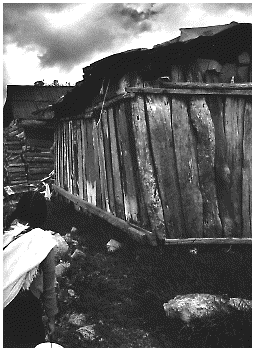 I once had a worker here named Valentine who had an insatiable appetite for fruit, booze and whores, not necessarily in that order.
I once had a worker here named Valentine who had an insatiable appetite for fruit, booze and whores, not necessarily in that order.
He was big and hairy --- looking vaguely like King Kong before he got hooked up with the Empire State Building and that screechy woman. Those of us who had been around him for awhile Valentine well knew that, despite appearances, he wouldn't hurt a fly --- but he was a dangerous menace to a bottle of mescal if he happened to pass one in the street.
He was friends with most of the ladies over at Chamisal --- Chamisal being a collection of the local houses of prostitution. Valentine would pick any ripe fruit that was growing in the huerta and take it over as a present to the ladies. I was told that his love offerings were so well-received that he never had to pay for a single night of love.
We Americans have been convinced, since the United States Attorney General closed down Storyville, in New Orleans, in 1917, under the guise of promoting the war effort, that naked lust can and must be banned. As Jimmy Swaggart and countless others will testify, we know how successful that has been.
Mexico, fortunately, has a Catholic pragmatism: they know that you can't chase away lust like a pack of flea-bitten dogs. So they keep it marginally visible, and marginally regulated. Every Mexican village, as far as I know, has its own Chamisal: somewhat apart from center city, dedicated to the raucous pleasures of drink and lust. The community's sin is thus properly sited in one single area, making it so the rest of the city can keep its nose clean.
In Puerto Perdido, our center of pleasure is located, appropriately enough, just across the highway from the gas works. It is actually a hutch of houses --- about six in number.
During the dry season, Chamisal comes to have the elements of a road show. Whenever any of the towns within a hundred miles of here has its annual fiesta, the staff and management of the various houses load up a couple of busses and take their entourage out to the sticks.
A pied-à-terre is set up in the village: studs are planted in the ground (if not in the beds), palm fronds are tied atop the cross struts, and the whole is enclosed in a black tarp. Metal tables and chairs and a very noisy stereo system --- preferably one with huge, tattered speakers --- are installed, and a cooler is brought in for the beer. A corner of the palapa is set aside with one or two enclosed spaces, sheathed in tarp, complete with mattress, for what we think of as the heart of the operation --- los negocios.
There always seems to be a crowd of young men hovering just outside the entryway of these portable love-nests. They are as nervous and distracted a bunch as I have ever seen. They look in and, amidst the winking red and yellow and violet lights, gander at the ladies sitting around the tables inside. One of the things that may make them so dilatory is not shame, nor fear of some terrible disease (these places have hired medical inspectors to keep the wages of sin from killing off the paying customers).
More likely, it's the inflation rate now piled atop the regular tariff. The going rate has risen dramatically in the last few years, being, now, up to 150 pesos (about $15) a shot, with what we used to vulgarly call around-the-world going for double or triple that, depending on the shopworthiness of the merchandise. For most workers here, that's two to four days' wages in the hot fields, picking peanuts, planting maiz, sweating.
After a week or so, the fair runs out of steam, the hutches are dismantled, the ladies are loaded on busses, shipped back to Chamisal --- and the whole thing disappears in an evanescent haze, as if it never had been, as if it, and we, were a mere dream.
The photographs are from * * * This article first appeared, * * *
Chiapas --- The End of Silence
by Antonio Turock (Aperture)
in slightly different form,
in salon.com